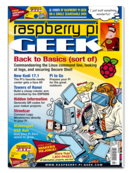Writing and reading man pages
Few features are more closely associated with Unix-like systems than man pages [1]. First used in 1971 [2], man pages quickly became the standard form for online help. Even the GNU Project's preference for help formatted in Texinfo has done little to affect man's popularity, because, more often than not, man pages are available alongside Texinfo files.
Many users have come to take man pages for granted, using only the basic man command and never considering how they are created or structured. However, even if you never write a man page yourself, knowing how they are organized externally and internally, as well as their conventions, can help you both find and read them more efficiently.
Man Sections
Most man pages are organized in sections or chapters (Table 1). To avoid confusion between files of the same name in different sections, man files take the format NAME.SECTION.bz (or .gz). Topics are usually referred to with the file name, followed by the section in parentheses (e.g., mount(8)).
[...]
Buy this article as PDF
Pages: 4
(incl. VAT)







